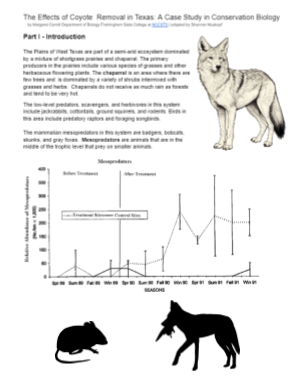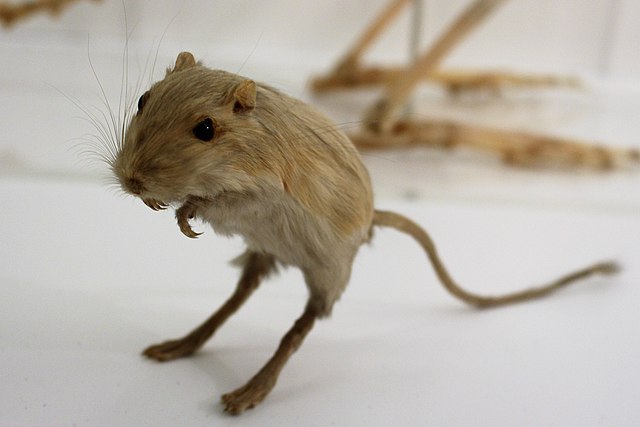
I adapted this activity from an original case study from NCCSTS. The study explores how the removal of coyotes from two treatment sites affects the biodiversity of the area. Scientists measured the abundance of mesopredators such as skunks and foxes over a period of two years. In addition, they also measured rodent biomass.
In Part 1, students read background information on the study with a focus on vocabulary words like mesopredator and chaparral. Each section has information, charts and graphs, and questions for students to answer. Students answer questions related to the text and create a conservancy proposal about coyote removal.
Next, students view maps showing the location of the control and experimental sites. Researchers will monitor the site for two years and gather data about the animal populations at those sites. Students make a prediction about what will happen in the experimental sites.
In Part 3, a graph shows the relative abundance of mesopredators at the sites before and after treatment. The graph includes error bars, which is something students may not be familiar with. Some students may also not be familiar with the term “abundance.” This page, with the graph, will likely be a page that students have many questions. Based on the graph, after the coyotes were removed, the number of mesopredators increased.
Biodiversity and Biomass
Though the number of mesopredators increased after the coyote removal, another group of animals seem to be thriving. Rodents! Now students view a graph showing the biomass of rodents before and after treatment. (Note, that treatment refers to coyote removal.) It would seem that removing coyotes cause rodents to increase in number. Though, it’s not just an increase in rodent number, but a certain type of rodent. Ord’s kangaroo rat is thriving, but the other types of rodents decrease in number.

https://commons.wikimedia.org/wiki/File:Em_-Dipodomys_ordii-_1.jpg
Though, the case study does not expressly state issues with biodiversity, with guided discussion, students should be able to discuss the impacts of biodiversity loss. They can also predict what will happen to all of the animals in the experimental plots when rodent populations increase quickly. Rodents eat all the plants, which impact other animals in the ecosystem.
Classroom Strategy
The activity is best done in small groups or as a classroom exercise, but it can be accomplished independently. Students will find it challenging, so I suggest pausing after sections and having class discussions. I usually print pages of long case studies separately, which allows for pausing and class discussions. If you give students all the pages at once, they tend to rush through and not gain deeper understanding of the science and data.

